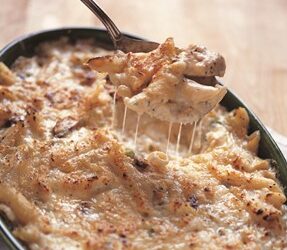Not everyone knows how to cook—but most would like to! I’ll sometimes whip up a little vinaigrette at friends’ houses when invited for dinner, and it seems that, more often than not, they say, “Wow! How did you make that? what went in there? the ingredients are in my kitchen??”
So for this weeks blog, I thought I would write about three great things for beginning cooks to learn how to make. And it happens that a nice simple meal can be built around these: a vinaigrette, a marinade and a pound cake.
We’ll start with the vinaigrette. Contrary to the “standard” measurements for it—which in my opinion are too oily for today’s palate, I prefer to do 1 part vinegar to 2 1/2 to 3 parts oil. The vinegar and oil can be any kind. Other essentials to me are a small dollop of Dijon mustard, a big pinch of kosher salt, and some pepper. Those are the fundamentals, and from there you can get creative. Add a pinch of sugar or a drizzle of honey if you like it sweet. Add some garlic, lemon zest and a squeeze of citrus if you wish. Try adding grainy mustard or some chopped fresh herbs or a pinch of ground spice, such as cumin or coriander; or some chipotle chili powder and lime juice if you’re wanting a Latin influence. If Greek is your gig for the evening, toss in feta cheese, fresh oregano, chopped olives and lemon juice. Italian? Fresh basil, a dash of grated Parmesan, and extra-virgin olive oil for the oil. You get the picture. It’s just the basics and then you twist them to your taste! I have prepared a handy chart that you can use as your vinaigrette guide to get you started.
Next, there’s marinade. This is an herb marinade to use when you are grilling. And, yes, it is very similar to a vinaigrette! But, again, you can vary the flavorings. When marinating, let’s say, a beef steak or a lamb chop, I prefer to make a fairly thick marinade and leave it on for at least thirty minutes before cooking.If you are marinating overnight—which is great if you are planning that far in advance, you must do it in the refrigerator. For meat items, such as beef, pork or lamb, I bring them to room temperature—still in the marinade—for one hour before cooking, to take the chill off. Chicken can come out 30 minutes before cooking and fish 15 minutes. You can clip out these basics to post on your fridge.
If you are a very beginner cook, serve the grilled meat with some veggies and maybe a starch, such as rice or potatoes. But if you’re timid in that area, then just serve a big salad tossed with your vinaigrette dressing and put lots of fresh veggies in it.
Then there’s dessert—the pound cake. The old-school method for this cake is one pound of butter, one pound of flour, one pound of sugar and one pound of eggs. In an updated version, I tweaked the basic ingredients and gave a slew of ideas for add ins and variations, such as chocolate chips, lemon or orange zest, fresh ginger, lavender—the choices are numerous. This is a delicious cake to serve as is or with fresh fruit and a dollop of whipped cream. It also makes for a tasty morning brunch treat.
So I hope these three simple recipes will inspire those of you who are just starting out in the kitchen to try your hand and those of you who are already practiced at cooking to do your own creative twists with these basics.
Vinaigrette Basics
Acid: 1/4 cup of any of the following or a combination equaling 1/4 cup
lemon juice, lime juice, cider vinegar, balsamic vinegar
red wine vinegar, white wine vinegar, rice wine vinegar
Plus Add:
2 teaspoons Dijon mustard
3/4 teaspoon Kosher salt (use less if adding cheese or olives)
Oil: 3/4 cup Any of the following or a combination equaling 3/4 cup
mild-tasting vegetable oil, such as canola, olive oil, extra-virgin olive oil
nut oils, such as hazelnut or walnut oil (do not use nut oils for more than half of total oil)
Flavorings: as desired
black pepper, pinch of cayenne pepper
1 tablespoon grated lemon, lime or orange zest (colored part only—no white pith)
1 tablespoon chopped mild fresh herbs (basil, tarragon, chives, oregano, cilantro)
1 1/2 teaspoons chopped strong fresh herbs (thyme, rosemary, marjoram)
2 to 3 tablespoons grated parmesan cheese, crumbled blue cheese or feta cheese
2 tablespoons chopped calamata olives, sun dried tomatoes or roasted peppers
2 to 3 teaspoons finely minced fresh garlic
2 to 3 teaspoons finely minced fresh ginger
1 tablespoon honey
2 teaspoons sugar
2 teaspoons poppy seeds
1 tablespoon Asian-style sesame oil
1 tablespoon toasted sesame seeds
1 tablespoon finely minced shallots
2 tablespoons thinly sliced green onions
1 teaspoon hot chili paste or hot sauce
With a small wire whisk, in a small bowl, whisk together your acid component, Dijon mustard and salt. Then slowly whisk in the oil, adding it in a thin drizzle. This technique is to emulsify (make smooth and combined) your dressing. Then add your flavoring components. You can keep the vinaigrette refrigerated for up to 2 weeks. Whisk up well before each use. Toss with your favorite greens. Experiment with different flavorings and combinations for your vinaigrette. Also try out various greens and salad additions, such as nuts, fruits, cheeses, meats and seafood. ©2009 by Kathy Casey Food Studios®
Basic Marinade for Grilling
Marinates 4 to 6 portions of protein
2 tablespoons fresh lemon juice
1 tablespoon minced fresh rosemary or other fresh herb
1 tablespoon Dijon mustard
1 tablespoon finely minced garlic
1/3 cup olive oil or salad oil, depending upon which herbs you are using
1/2 teaspoon coarse-ground black pepper or 1/4 teaspoon red chili flakes
4 to 6 portions of protein, such as chicken breasts, steaks, pork loin chops, salmon, or large shrimp, or large portobello mushrooms for a vegetarian option
In a small bowl, whisk together all marinade ingredients. Lay out protein in a shallow, non-aluminum baking pan. Spoon half the marinade on the top side of each portion and rub it around, then flip the protein and spoon on the remaining marinade, being sure that all surfaces are covered. Cover pan with plastic wrap and refrigerate for at least 30 minutes or up to overnight.
When ready to cook, heat grill to medium-high heat, then brush grill lightly with oil. Be sure grill is hot before placing protein on it. Sprinkle both sides of protein with kosher salt, and grill on the first side, being sure not to move it until there is a good charred grill mark. (The biggest mistake that home cooks make is to “touch” what they are grilling too much and move it around before it is ready; this causes sticking.)
Grill to desired doneness. No specific time can be given as it will depend upon your heat and what you are grilling. Typically, if there are nice grill marks on each side, the food is probably close to done. You can refer to internal cooking temperatures on the Internet, but I think that most government-determined temperatures are too high. So, until you are a seasoned griller, get a small paring knife and cut a tiny “peek “into the center of what you are cooking. For poultry you will want to see no pink; fish should be just cooked and not dry; shrimp should be just pink on the outside and barely opaque inside; and steaks should be the way you like them!
This marinade is a basic one, so get creative here, too, when you feel ready. Practice makes perfect. And grilling is “rustic,” so if you make a mistake, it is not the end of the world—just jump back in and try it again soon. ©2009 by Kathy Casey Food Studios®
Simple Vanilla Pound Cake
Makes 1 cake, 10 to 12 generous slices
2 cups all-purpose flour, measured by the scoop and sweep (level off with a straight edge) method
1 1/2 teaspoons baking powder
8 ounces (2 sticks ) butter (I like to use salted for that little flavor boost), at cool room temperature
1 1/4 cups sugar
4 eggs
1 1/2 teaspoons real vanilla extract
extra flavor “goodies” (see Chef’s Notes, below)
Preheat an oven to 325 degrees F.
In a small bowl, sift together the flour and baking powder. (But sometimes I just stick these in a bowl, whisk them together to incorporate the baking powder, and forget the sifting!) These are the “dry ingredients.” Set aside.
“Prepare” a 9-by-5-by-3-inch loaf pan by greasing or pan-spraying first and then lightly dusting with flour. Tap out any excess flour.
In an electric mixer, combine butter and sugar and mix with beater attachment on medium speed for about 2 minutes, or until fluffy. This is called “creaming.” Halfway through mixing, stop mixer and scrape down the sides of the bowl with a rubber spatula,
being sure to get down to the bottom of the bowl, too. Next, add eggs and vanilla and mix on medium-high speed for 1 minute. When the eggs and vanilla are beaten in, stop the mixer and add half of the dry ingredients into the creamed mixture. Turn mixer on slow speed just until flour is incorporated, then raise speed to medium and mix for 30 seconds. Turn off mixer and add remaining dry ingredients. Turn mixer on slow to incorporate flour, then raise speed to medium and mix for 1 minute.
If you are adding flavorings and “goodies,” such as lemon peel, chocolate chips, lavender, etc., now is the time to stir them in. With rubber spatula, scrape the batter into the prepared pan, being sure batter fills all the corners. Smooth out batter on the top and then tap pan sharply on the counter to release any air bubbles.
Bake in preheated oven for about 1 hour and 5 minutes or until a cake tester—or bamboo skewer or toothpick—inserted into the center comes out “clean.” This means that there is not a bunch of gooey batter stuck to the skewer and it is not wet to the touch. If there is, then bake cake for 5 to 10 minutes more until the tester comes out clean. Halfway through the baking time, carefully rotate the pan in case there are hotter or colder zones in your oven. Ovens vary and home baking is not an exact science, so use your best judgment on cooking time. When done, this cake will be rich golden brown on top and slightly coming away from the edges of the pan.
Remove cake from the oven and let it “rest” on a rack for 5 to 10 minutes. Then slide a paring knife around the sides to help loosen the cake, and turn cake out onto rack to cool for at least 30 minutes before serving. To serve, slice cake (I prefer to use a serrated knife) into 3/4- to 1-inch thick slices and top with seasonal fresh fruit, such as berries or peaches. Other options are whipped cream and ice cream … or just eat it plain!
Chef’s Notes: Try adding any of the following or combinations. Just use your creative juices and experiment, but keep the total additions to 1/2 cup or less!
2 tablespoons finely grated lemon or orange zest (colored peel only, no white pith)]
1/2 cup mini chocolate chips
1/4 cup chopped candied ginger
2 teaspoons dried lavender flowers
1/3 – 1/2 cup chopped dried fruits, such as cranberries, candied pineapple, mango, etc. (pre-soak fruit in 2 tablespoons of water)
1/2 cup chopped nuts, such as almonds, hazelnuts or walnuts
©2009 by Kathy Casey Food Studios®



